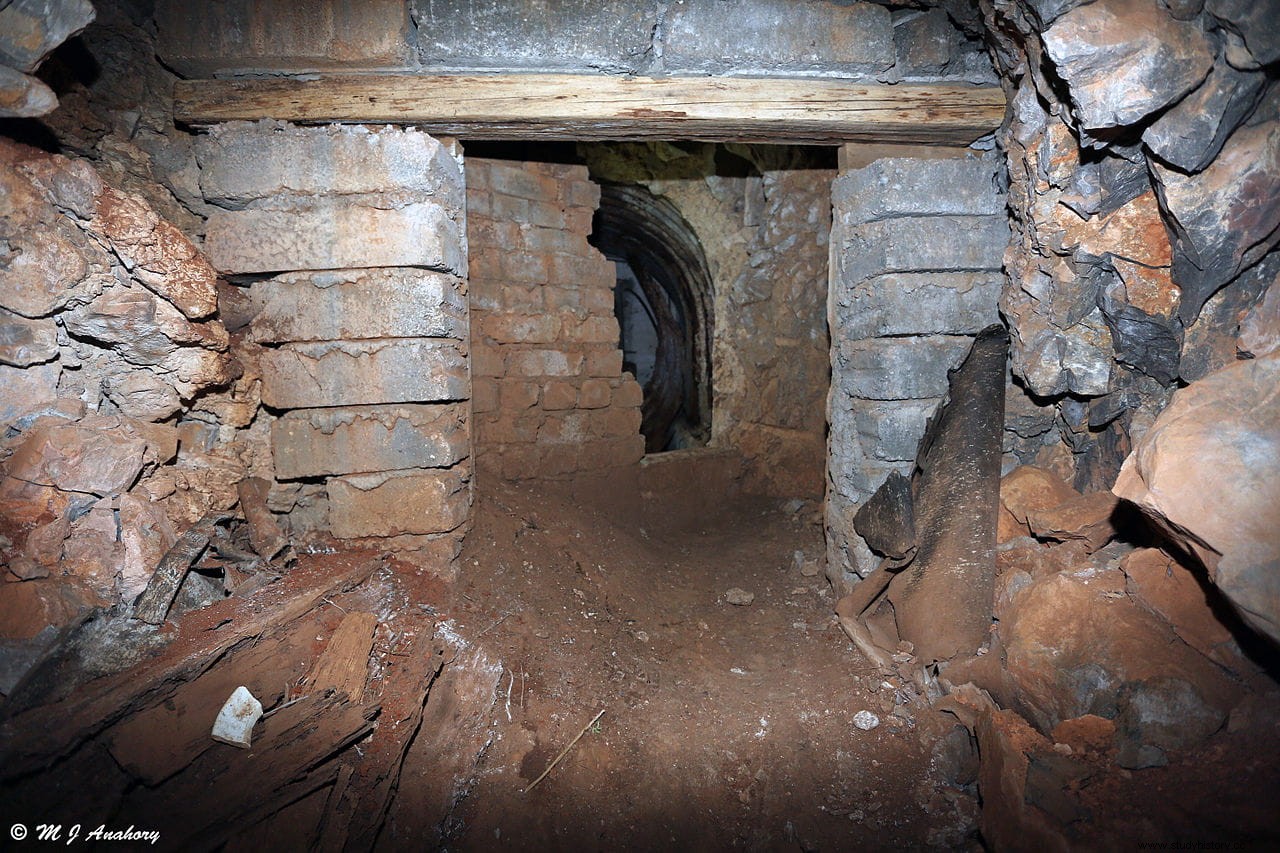After the fall of France in June 1940, Hitler considered invading Spain and North Africa. Finally, those plans were discarded and Germany sought the complicity of General Franco's regime to allow the Nazi troops to take Gibraltar, which would later allow them to launch an offensive against the French troops in the Maghreb from there.
But the negotiations failed and the German operation could never be carried out. However, the British were not very trusting and launched an operation in 1941 in case Gibraltar finally fell into enemy hands. It was called Operation Tracer .
The plan was to create a covert observation post on the rock, which could remain active and send information to the UK, even if Gibraltar was occupied by the Germans.

Construction was completed in the summer of 1942. Six volunteers were selected to be sealed inside in case of invasion:one officer, two doctors and three radio operators. Provisions were stored in the complex so that they could last seven years.
All those who had participated in the construction were immediately repatriated to Great Britain, to prevent them from revealing the exact location.
The main room of the complex measured 14 x 4.8 x 2.4 meters and was located at a height of 410 meters. It had two observation openings, one to the west over the Bay of Algeciras and another to the east over the Mediterranean. Inside there were two electric generators, one of them powered by a bicycle. The entire floor was covered with cork to reduce the noise of the transmissions.

The commanding officers of Operation Tracer were Admiral John Henry Godfrey, his secretary Edward Merrett, and his personal assistant, none other than Commander Ian Fleming, later to become famous for creating the character of James Bond. /P>
But Operation Tracer never got off the ground. The conquest of North Africa by the allied forces in May 1943 and of Sicily in August of that same year, made the danger over Gibraltar dissipate. The vaults were sealed and the supplies were redistributed.
For many years it was not known where that secret post was. Some historians identified it with the tunnel system called Lord Airey's Shelter, located at the southern end of the rock. Its main chamber measures 34 by 4.6 meters, with two other smaller chambers adjoining it. It is connected to the rest of the tunnel system that exists inside the upper part of the rock.
Other historians believed that Lord Airey’s Shelter it was just a distraction. While the German spies noted the amount of waste that was removed daily from there, in reality the real secret shelter was built elsewhere. And indeed it was.
In December 1997 a group of Gibraltarian speleologists found the cavities in the vicinity of Lord Airey's Shelter, bicycle included. They kept the location secret for three months while they explored it. The following year, Dennis Woods, one of the six men who had been selected for the operation, returned to the site and confirmed that the find was correct. But he also claimed that there were two other simultaneous projects , which have never been found.
In October 2008 the last survivor of the members of the operation, Bruce Cooper, visited the place with his family. In 2012 the documentary Operation Tracer – Stay Behind Cave was published. .
